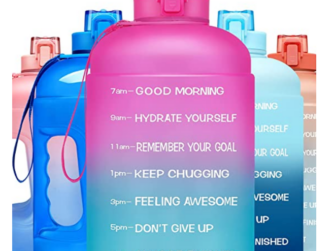Hey friend,
Let’s have a real talk.
You’ve been showing up.
You’re putting in the work.
You’ve been consistent with your workouts.
Maybe you’ve even tightened up your nutrition.
But every morning you step on the scale, you’re met with the same stubborn number.
Frustrating, right?
First of all—take a breath. You’re not alone, and this happens a lot. In fact, this might be one of the most common things I hear from clients, friends, and followers:
“I’m working out, eating better… so WHY isn’t the scale going down?”
Let’s break this down in a way that’s encouraging (and maybe a little eye-opening).
💡 The Scale Doesn’t Tell the Whole Story
Here’s the truth: your weight is just one small piece of a very big puzzle.
It doesn’t measure:
- Muscle mass
- Body fat percentage
- Water retention
- Hormonal fluctuations
- Gut content (yep, what’s still digesting)
- Stress or inflammation
And it definitely doesn’t measure your effort, strength, or commitment.
So if you’ve been training, especially strength training, it’s likely you’re building lean muscle—which weighs more than fat by volume. That means you could be losing inches and body fat while the scale stays exactly the same.
📏 A Real-Life Example:
One of my clients, let’s call her Sarah, was stuck at the same weight for 6 weeks. She was doing resistance training 3x a week and walking every day.
She felt stronger and her clothes fit better, but the scale didn’t budge.
Then we measured her body:
- Down 3 inches in her waist
- Down 2 inches in her hips
- She even moved down a pant size
Same weight. Completely different body composition.
🧠 Your Body Is Adapting Behind the Scenes
When you change your habits—your workouts, your meals, your hydration—it takes time for your body to adjust. Sometimes your body holds onto water as part of the recovery and adaptation process, especially after strength training.
This is normal.
This is progress.
This is your body saying, “Okay, let me figure this out before we make big shifts.”
If you’ve ever felt sore after a workout and noticed your weight increase slightly, that’s water retention from muscle repair. Totally normal and temporary.
📊 Progress ≠ Pounds
Here are some better ways to measure your progress:
1. Progress Photos
Take a photo every couple of weeks—same time of day, same lighting. You’ll be amazed at the changes you see that the scale doesn’t show.
2. How Your Clothes Fit
Pants getting looser? Shirts not pulling as much? That’s a sign of fat loss and body recomposition.
3. Energy Levels
Are you more energized throughout the day? Less sluggish? That means your metabolism and overall wellness are improving.
4. Strength & Performance
Are you lifting heavier? Getting through workouts easier? That’s a massive win.
5. Mood & Mindset
Feeling more confident, clear-headed, or motivated? Those mental shifts are just as valuable.
🧂 The Sneaky Culprits of Scale Fluctuation
Let’s be real—your weight can change by a few pounds in just 24 hours due to:
- Salt intake: Sodium causes temporary water retention.
- Menstrual cycle: Hormones cause fluctuations throughout the month.
- Sleep quality: Poor sleep affects cortisol and metabolism.
- Stress: Yep, stress alone can cause bloating and fat storage.
- Hydration: Not drinking enough water can actually make your body hold onto it.
So if your weight is up a little one day—don’t panic.
It’s not fat gain. It’s usually something simple that resolves on its own.
⚖️ But What If the Scale Really Isn’t Moving?
Okay, let’s say it’s been several weeks or months, and despite doing “all the right things,” nothing’s changing. Here are a few things to check in on:
1. Are You Eating Enough?
Yep, not eating enough can slow your metabolism. Your body needs fuel—especially if you’re training.
2. Are You Tracking Portions Accurately?
Healthy food still has calories. A tablespoon of peanut butter can easily turn into three if you’re eyeballing.
3. Are You Actually Moving Enough Outside the Gym?
Your 45-minute workout is awesome—but what’s happening during the other 15 hours of your day? Walking, standing, and basic activity matter.
4. Are You Being Too Hard on Yourself?
This is a big one. If you’re obsessing over the scale, you’re missing the bigger picture. Be kind to yourself. Change takes time.
✅ Here’s What You Can Do Starting Today:
- Shift your focus to non-scale victories.
- Take progress photos, measurements, and track how you feel.
- Stay consistent. Consistency is what moves the needle.
- Don’t let a number steal your motivation.
🥾 Challenge: 5,000 Steps a Day
Let’s do something together—starting today.
👉 Your challenge is to aim for 5,000 steps a day.
That’s it. No pressure. Just a simple way to create awareness and build momentum.
No step counter? No worries:
- A 5-minute walk is about 500–600 steps
- A 15-minute walk can be 1,500–2,000
- A 30-minute walk might get you close to 4,000–5,000
Pick what works for you. Then build from there.
Final Thoughts
I get it—when you’re working hard, and the scale doesn’t reflect your effort, it’s discouraging. But let me remind you:
Progress is happening—even if the scale hasn’t caught up yet.
You’re building strength. You’re creating healthier habits. You’re changing your mindset.
That’s real transformation.
Keep going.
Celebrate the small wins.
And remember—you are way more than a number.
Want help customizing your nutrition or fitness plan? Let’s connect! I’d love to support you.
👉 Find more resources at www.legionfitness.com
📱 Follow along on Facebook and Instagram for tips, motivation, and updates.
Stay strong, stay consistent—and I’ll catch you in the next post!
— Coach Chris 💪







